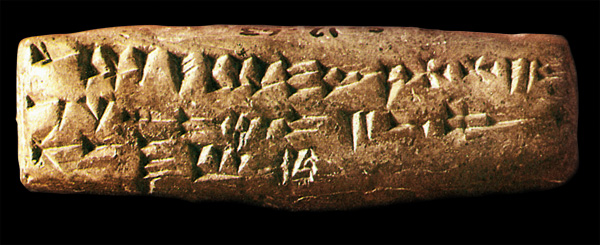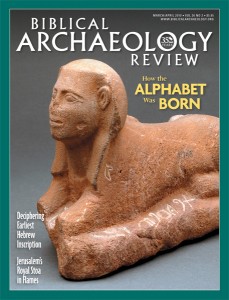A Cuneiform Alphabet at Ugarit
Sidebar to: How the Alphabet Was Born from Hieroglyphs

During the 14th and 13th centuries B.C.E., many of the royal scribes in the Canaanite coastal city of Ugarit (modern Ras Shamra in Syria) were trained in a unique form of the wedge-shaped cuneiform script. Unlike the normal cuneiform script, which includes hundreds of signs, the new Ugaritic script is made up of only a couple dozen.
After studying the script, scholars realized that Ugaritic is, in fact, an “alphabetic” cuneiform script that adapted the techniques of cuneiform writing (i.e., clay tablets, stylus and wedge-shaped signs) to an alphabetic system. Thirty cuneiform characters were used to write all sorts of documents, from letters to literary texts.
Toward the end of the Late Bronze Age, the Ugaritic alphabet spread to Canaan. Single tablets in this special cuneiform script have been found at Canaanite Beth Shemesh, Taanach, Nahal Tabor and other locations.
In Canaan, during the 13th and 12th centuries B.C.E., two alphabetic writing systems lived side by side: the cuneiform Ugaritic alphabet, practiced by educated scribes in the urban centers, and the “script of the caravaneers” born in the mines of Serabit el-Khadem and practiced occasionally and in a limited form (mostly for writing names) by the non-urban Canaanite populations who inhabited the hill country and the urban fringes.
Does this mean that the alphabet was invented again, independently, by the learned scribes in Ugarit, several hundred years after the Canaanite miners of Serabit had already come up with the same idea?
Already a library member? Log in here.
Institution user? Log in with your IP address.

